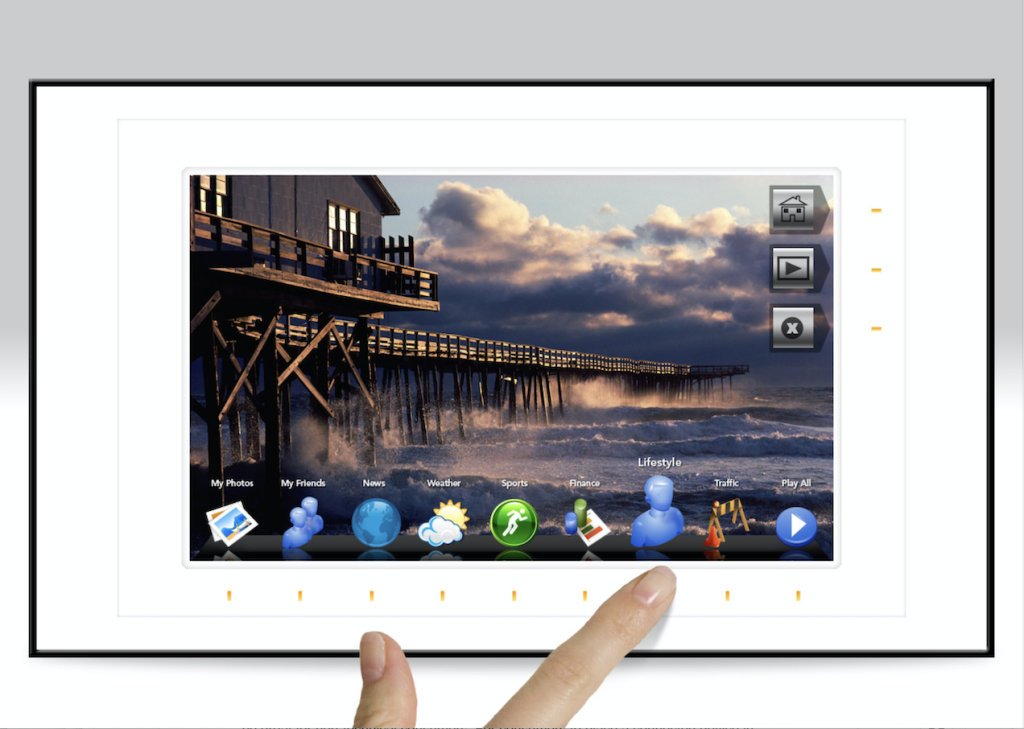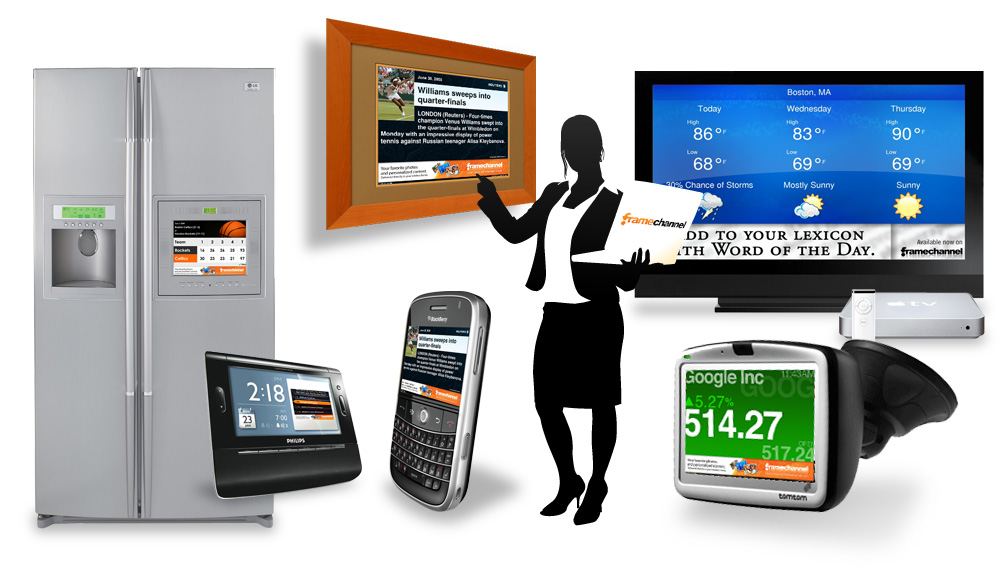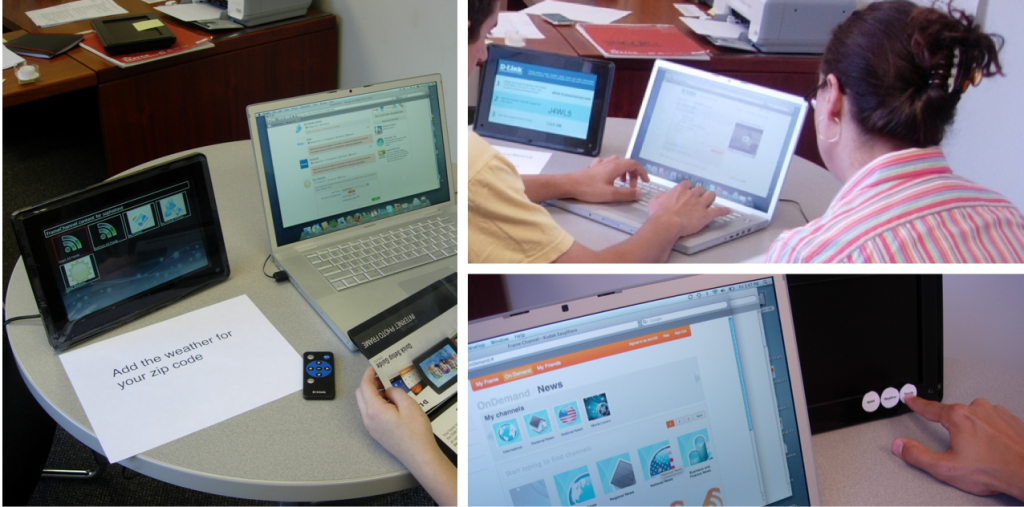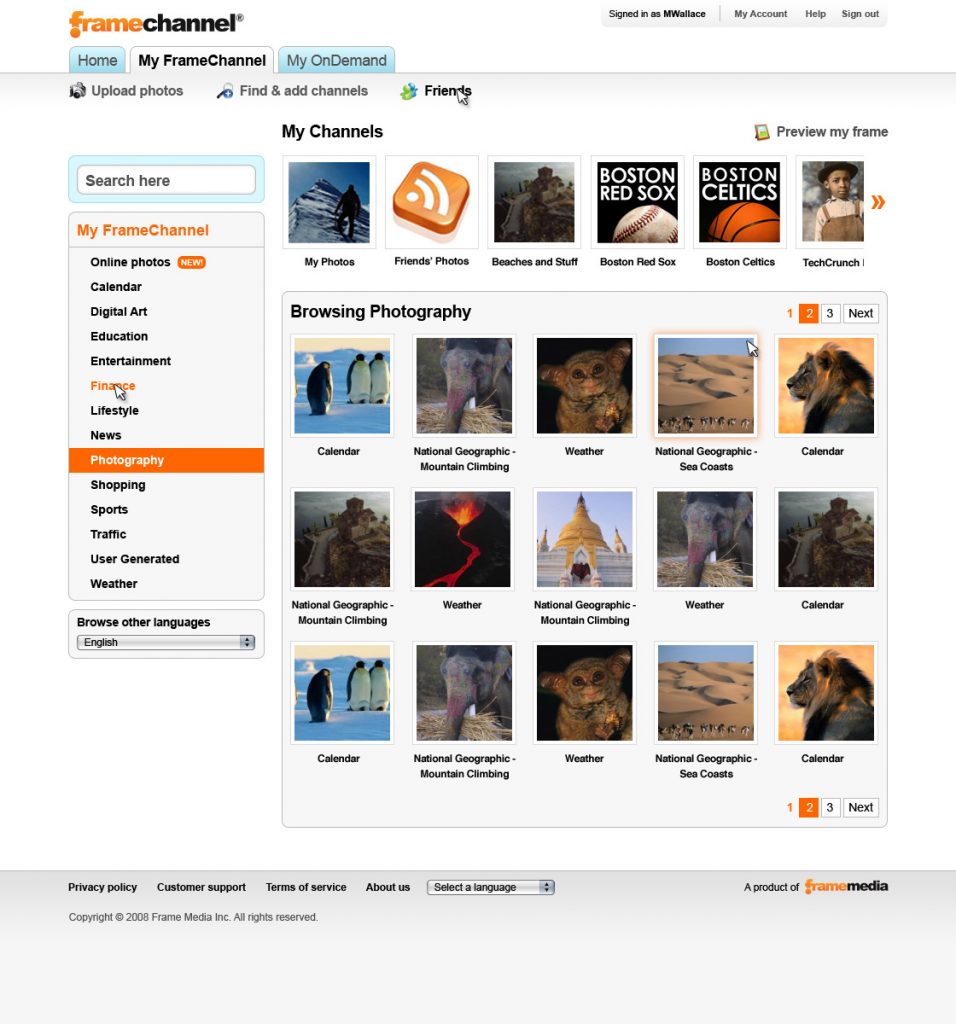A wireless digital photo frame delivering customized content to consumers
Skills
Product design in a startup, new product launch, connected device interaction design, user research
Background
I joined a small early-stage VC-funded startup in Boston called Frame Media as the VP of Product, recruited by the CEO for previous consulting work I had done with him. At Frame Media, managing a two-person team, I led the user experience design for the content delivery platform Framechannel launched on the Kodak Easyshare WiFi digital photo frame.

These connected digital devices delivered customized content into consumers’ homes and featured a touch-sensitive bezel strip, a precursor to touch screens that would become common among cell phones. The company’s vision included delivering customized content to connected devices in the home, office, and automobile.

Connected device platform design
Having just been a member of the Motorola design team responsible for the Razr2 phone’s software platform UI, I was very excited to be designing a wireless picture frame interaction experience. I wanted the entire user experience to be great for non-technical consumers and enable easy content customization. For consumers to place a connected device in their home’s most intimate settings – in the kitchen or bedroom – required a high level of trust. I intended to enable an “end-to-end” experience – unboxing, network discovery and content customization – to be seamless, building trust with every touchpoint.
Immediately upon starting my new role, I began designing new concepts for displaying weather, stock quotes, entertainment and news – including designs for multiple languages. I worked closely with other design and marketing team members, engineering and executive leadership to ensure design was an important part of the product delivery process.
In addition to content design, I focused on designing the consumer interaction model for the frame and how users would access and choose content for their frames through touch gestures.

Establishing a user research lab
To gather user data I established an informal usability lab to perform user research on prototype devices, including frames hacked with paper buttons to simulate UI controls (see photos below) that were not yet available on the prototype frames.
This user research allowed me to identify UX challenges early on – including parts of the user journey sush as connecting the frame to a home WiFi network. My team and I worked to improve critical flows to enable a simpler onboarding experience for frame customers.

Admin console design for content customization on the frame
One of my responsibilities included the design of an admin console to allow consumers to customize content on their frames via a web interface. This console needed to be simple enough for a non-technical consumer to customize the frame feed by choosing content channels.
Content choices came from many content partnerships that allowed consumers to create custom content experiences delivered to their homes, including weather, sports, entertainment and financial data. As a result, the updated admin console design solved some challenges of discovering content channels and navigation among many channels.

Business results
Kodak released the Kodak Easyshare wireless frame globally in 2008. I proceeded to work on the V2 release of the Framechannel platform, including new dynamic methods for customizing content on the device. I also started investigating design concepts for several ideas on how the frame could be used as a channel for browsing brands and enabling easy “tap to purchase” interactions. Many of these early concepts have now been realized in visually-oriented social media sharing experiences that are integrated with purchasing.
Frame Media later changed its name to Thinking Screen Media. The V2 platform release (2009) and the SaaS user experience I designed won several awards, including a 2010 Webby award for “Websites and Mobile Sites Best Practices”. The Framechannel platform delivered thousands of content channels to connected devices from over 25 manufacturers, including Samsung, Sony, Kodak, D-link, Cisco, Philips, TiVo, Roku, Toshiba, Viewsonic and Motorola.
Thinking Screen Media, which raised a total of USD 7.1 million dollars in venture capital, went out of business in 2011.
In 2023, concepts I investigated in 2008 on wireless photo frames have become commonplace in consumer mobile experiences such as Instagram. Consumers can now browse branded content and, with one tap, explore and purchase products without navigating away from the content viewing experience.
Executive references for my work
Below is a quote from the Boston Business Journal:
Thinking Screen Media Inc. (formerly Frame Media) COO and founder Jon Finegold worked with Karen Donoghue on software for Kodak’s Framechannel family of connected picture frames and media players:
“Karen had a lab where she would bring in people from the outside and say ‘here’s your device, go to it,’ and sit there and watch them. Where do they struggle? What questions do they ask? We might have rolled out 30 modifications to that platform over the course of a few months, based on this iterative process.”
In 2012, COO and founder Jon Finegold also had this to say about my work at Frame Media:
“Karen is a superb UI designer with a broad base of experience across web, mobile and embedded devices. Karen led our UI design for the v2 version of FrameChannel, our OnDemand experience with the Kodak WiFi photo frame and key content channels such as news, stock quotes, weather and People Magazine. I would recommend Karen; she is a proven talent in user experience design.”
Credits: Composited images in this case study were designed in collaboration with David Kruta